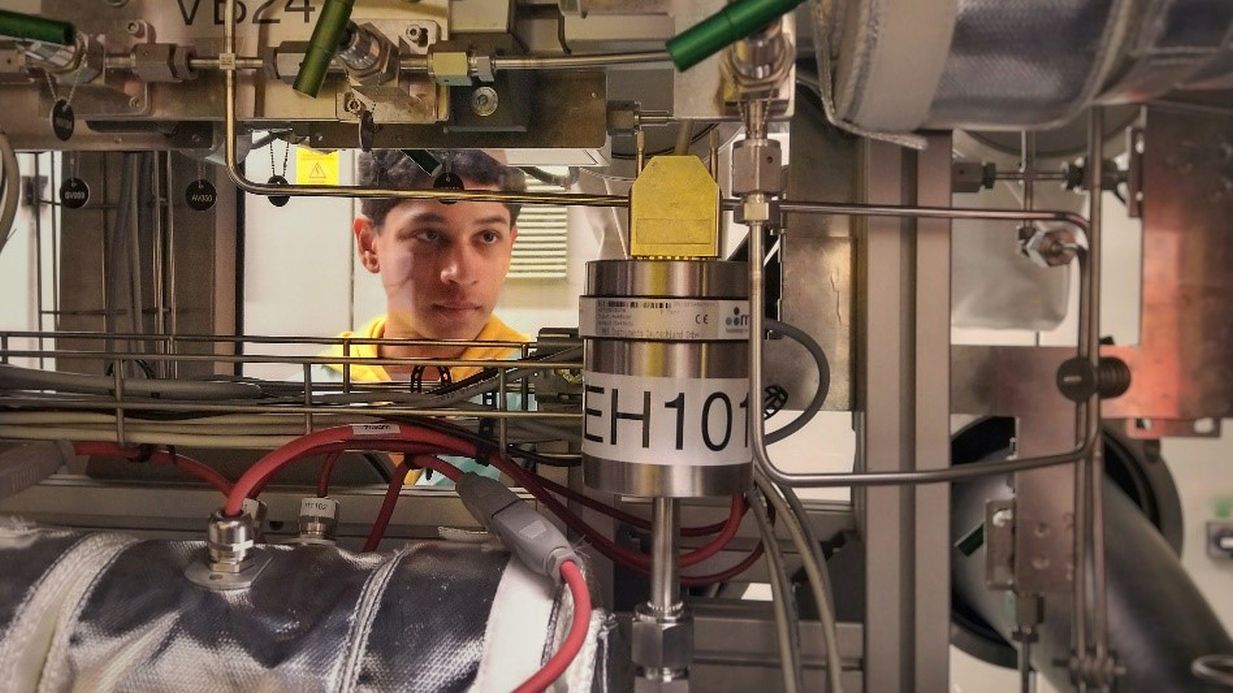By producing virtually unlimited amounts of energy, nuclear fusion could solve many energy supply problems. But its technical implementation is complex, and key components of future power plants are still lacking. To change that, the Karlsruhe Institute of Technology (KIT) is working with partners in academia and industry to develop the first integrated fuel cycle for stellarators.
Power plants with fusion reactors are a great hope for clean energy generation in the future. “There has been spectacular progress in generating and handling fusion plasma in recent years,” said Dr. Thomas Giegerich from KIT’s Institute of Technical Physics (ITEP). “But for practical operation, there are still many unsolved problems.” An example is the fuel cycle for stellarators, a reactor type in which the plasma is confined in a twisted magnetic field to enable continuous operation. “So far there’s no scheme for handling the fuel in a future fusion power plant,” Giegerich said. “And there’s no facility where such a fuel cycle could be validated.” Now a consortium with industry partners is to implement both in the SyrVBreTT (a German abbreviation for “synergy alliance for fuel cycle and tritium technologies”) project, which is coordinated by KIT.
Integrated Fuel Cycle Development
A fusion power plant needs fuel consisting of a mixture of the hydrogen isotopes deuterium and tritium, which are converted to helium in its reactor. To prevent the helium concentration in the fusion plasma from getting too high, the fuel mixture in a stellarator needs to be continuously pumped out, purged of helium, and then reinjected with fresh fuel. The complete set of required systems is called the inner fuel cycle. Since the tritium needed for the fusion reaction is not available in nature due to its short half-life of only a few years, it needs to be generated artificially in so-called breeder blankets; all of the systems required for this are called the outer fuel cycle. “In our project, we’re developing the components needed for both cycles, such as pumps, storage beds and pellet injection systems,” Giegerich said.
To avoid problems with the various component interfaces, the inner and outer fuel cycles are being developed to work together effectively. Special simulations and experimental analyses will be performed to ensure that the technologies can be validated under realistic conditions. “A fuel cycle test facility is being developed here at KIT to test all relevant systems under realistic conditions,” Giegerich said, adding that this is a crucial step in enabling the transition from experiments to practical use.
About SyrVBreTT
KIT is coordinating the SyrVBreTT project, which includes the following partners from academia and industry: Forschungszentrum Jülich, Gauss Fusion, Kyoto Fusioneering Europe GmbH, and the University of Stuttgart. Initial plans call for SyrVBreTT to run for three years; the project is funded with EUR 20 million from Germany’s Federal Ministry of Education and Research. Of that amount, EUR 4.8 million will go directly to KIT.
More about the KIT Energy Center
Being “The Research University in the Helmholtz Association”, KIT creates and imparts knowledge for the society and the environment. It is the objective to make significant contributions to the global challenges in the fields of energy, mobility, and information. For this, about 10,000 employees cooperate in a broad range of disciplines in natural sciences, engineering sciences, economics, and the humanities and social sciences. KIT prepares its 22,800 students for responsible tasks in society, industry, and science by offering research-based study programs. Innovation efforts at KIT build a bridge between important scientific findings and their application for the benefit of society, economic prosperity, and the preservation of our natural basis of life. KIT is one of the German universities of excellence.

